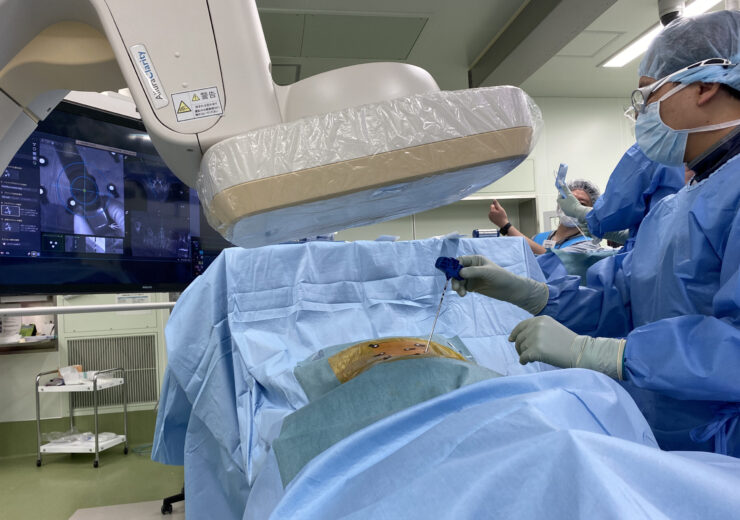The 3D AR ClarifEye solution aids in the treatment of patients with spinal stenosis and scoliosis via minimally-invasive image-guided procedures

Philips’ augmented reality (AR) surgical navigation solution ClarifEye. (Credit: Koninklijke Philips N.V.)
Health technology company Royal Philips has extended the rollout of its augmented reality (AR) surgical navigation solution, ClarifEye, to Japan which yielded positive results in the first patient treatment in Japan.
Using the 3D AR solution, the first patient was treated by orthopaedic surgeon Dr Ken Ishii at the International University of Health and Welfare, Mita Hospital, Tokyo.
ClarifEye was installed on Philips’ interventional X-ray system in a hybrid operating at the hospital to treat patients with spinal stenosis and scoliosis via minimally-invasive image-guided procedures.
Philips’ latest augmented reality surgical navigation device is said to integrate 3D AR navigation with 2D and 3D graphics at minimal X-ray exposure.
It enables surgeons to define and traverse crucial trajectories for accurate device placement while minimising damage to neurological and circulatory systems near the patient’s spine.
Philips Image Guided Therapy Systems general manager Karim Boussebaa said: “Mita Hospital’s positive experience of using ClarifEye to deliver the benefits of minimally-invasive therapy to its spine patients mirrors that of hospitals in Europe and the Middle East who also recently adopted the system.
“ClarifEye adds a new dimension to surgical precision for patients. It is a great example of how we are innovating procedures and helping clinicians to deliver on the Quadruple Aim of better health outcomes, improved patient and staff experiences, and lower cost of care.”
Philips said ClarifEye’s live-video computer vision and augmented reality (AR) technology applies non-invasive position markers to the patient’s skin in order to track the patient location.
The resulting live video is then superimposed on a 3D cone-beam CT scan of the patient’s spinal column.
The firm claimed that the solution allows surgeons to see both the inside and outside of the patient in the same picture, together with the planned and actual route of a Philips ClarifEye needle without any use of live X-ray imaging.
According to the healthcare firm, data published in the Scientific Reports Journal suggested that in open deformity cases, ClarifEye showed 94% accuracy while similar surgeries performed with no help from intra-operative navigation showed 89.6% accuracy.
Additionally, data published in European Spine Journal demonstrated 98% accuracy of pedicle screw placement in comparison to other navigation and robotic systems.
